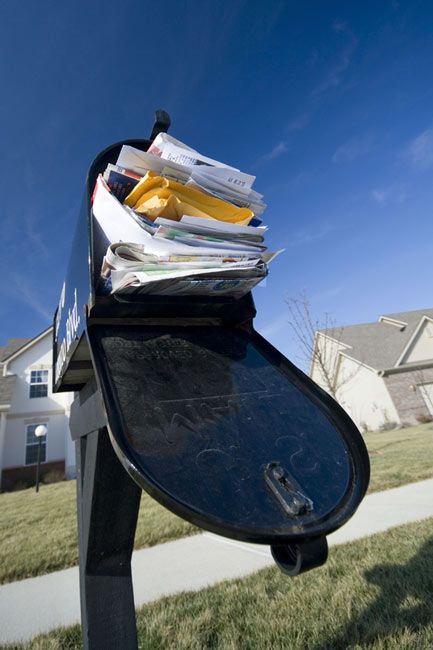January Deemed The Most Dangerous Month for Mail

Checking the mail in December is usually a pleasant experience, with mailboxes stuffed with holiday cards and packages.
Then comes January. The Christmas bills are depressing enough, but in January, mailboxes begin to bulge with W2s, 1099s, statements from financial institutions and IRS forms. No wonder John Ulzheimer, president of consumer education for Smartcredit.com, calls January the most dangerous month for mail.
“January is a high-value month for thieves,” he said.
It’s especially easy for theives to dip into someone’s mailbox, take the envelopes, and have all the information needed to steal someone else’s identity.
How to best protect mail, short of meeting the mail carrier at the mailbox each day, is the million-dollar question. You certainly shouldn't stop your mail because many of the items are time-sensitive. And, creating an alternative delivery destination, like a P.O. box, could end up causing more trouble than it’s worth, said Ulzheimer.
The first step is to know what tax-related statements you should be receiving. For most people, the forms include a W2, unearned interest statements from your bank, interest statements from your mortgage lenders and perhaps end-of-year retirement account statements. Independent contractors who receive 1099 statements should have a list of companies they’ve done business with.
Once you know what forms should be arriving, keep a tally of when they arrive and on February 1, take note of what is missing (it is important for independent contractors to remember that they may not receive a 1099 from everyone on their list, especially if the payment was less than $600).
Sign up for the Live Science daily newsletter now
Get the world’s most fascinating discoveries delivered straight to your inbox.
“If you haven't received them all by the end of January, then it's time to pick up the phone and start calling the banks, your HR department or anywhere else who should have sent you documents. Find out if they were sent, when they were sent, confirm where they were sent, and see if perhaps they're just going to be late,” said Ulzheimer.
If the tax document has been mailed and should have been received, then it’s time to take action. At that point, Ulzheimer recommended contacting the credit bureaus and ask for a copy of your reports, which are free if you think you are a victim of fraud.
“You should be looking for recent ‘inquiries’ -- a record of who pulled your credit report and on what date," Ulzheimer said. "If you see any new inquiries and you never applied for credit, then contact the company and let them know of the potential fraud.
“Also, at the same time you're going to want to place fraud alerts on all of your credit reports and even go so far as to ‘freeze’ them, which is free in most states if you've been the victim of ID theft. This will prevent any new creditor from accessing your credit files without your pre-approval,” Ulzheimer added.
Even if nothing shows up on the credit scores immediately but the expected forms never arrive, Ulzheimer recommends people continue to monitor their credit or even issue a credit freeze. The data may have been sold but has not been circulated yet.
Another common tactic is for thieves to wait a while, hoping the victim will forget that the information went missing and won’t be on alert for problems.











